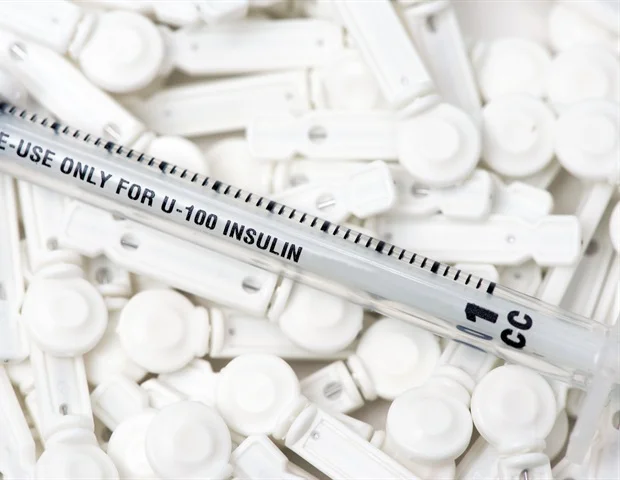
Abbott announced new late-breaking data demonstrating use of its FreeStyle Libre system, the world's leading sensor-based glucose monitoring technology, is associated with significant reduction in hemoglobin A1c (HbA1c) levels for people living with type 2 diabetes on either long-acting insulin or non-insulin therapy. These results are similar to outcomes typically seen when adding insulin therapy to treatment regimens, indicating people may be able to manage their glucose levels with sensor-based technology instead of adding insulin. The real-world data were presented as a late-breaking abstract at the American Diabetes Association (ADA) 80th Scientific Sessions.
In an observational, retrospective study (Abstract 84-LB) researchers assessed changes in HbA1c levels in people with type 2 diabetes who were either on long-acting insulin or non-insulin therapy. They analysed HbA1c levels from baseline to six months and baseline to 12 months after initiating use of the FreeStyle Libre system.
The results demonstrated overall lower HbA1c levels associated with the use of Abbott's technology, specifically a 0.8% drop after six months (from 8.5% to 7.7%) and 0.6% drop after one year of FreeStyle Libre system use (from 8.5% to 7.9%) – clinically significant reductions of average glucose levels over time toward the ADA's recommended A1c goal of 7% for adults with diabetes. Additional notable findings showed:
- The greatest HbA1c decreases occurred among the non-insulin users with type 2 diabetes, including a 0.9% reduction at six months and 0.7% drop after 12 months.
- Among those people with type 2 diabetes on long-acting insulin, HbA1c reductions were 0.6% and 0.5% at six and 12 months, respectively.
The real-world results are among the first studies that show use of the FreeStyle Libre system can deliver substantial reduction in HbA1c levels for those with type 2 diabetes, whether using insulin or not. These data highlight how use of Abbott's sensor-based glucose monitor could be game-changing for people beyond intensive insulin users, translating to broader use of the technology to benefit all those living with diabetes, no matter where they are in the spectrum of care."
Dr. Eden Miller, D.O., Family practice physician at High Lakes Health Care and one of the lead investigators of the study
Additional Late-breakers show reduction in HbA1c and hospitalizations
Two additional late-breaking abstracts assessed the impacts of using the FreeStyle Libre system in people living with type 2 diabetes not on intensive insulin therapy (such as bolus insulin). Results demonstrated the following:
- HbA1c Reduction Associated with a FreeStyle Libre System in People with Type 2 Diabetes Not on Bolus Insulin Therapy (Abstract 78-LB): A retrospective study found that a prescription for the FreeStyle Libre system in people with type 2 diabetes not on intensive insulin who had poor glucose control was associated with a substantial decrease in HbA1c, with the greatest reduction in those with higher baseline HbA1c levels. Specifically, A1c levels decreased 0.99% after six months in those on long-acting insulin and 1.56% after six months in those not on insulin. For those not using insulin, these results imply that using FreeStyle Libre technology can have a similar impact to using insulin therapy, meaning people could use the FreeStyle Libre system to manage their glucose levels instead of adding insulin.
- FreeStyle Libre System Use Associated with Reduction in Acute Diabetes Events and All-Cause Hospitalizations in Patients with Type 2 Diabetes Without Bolus Insulin (Abstract 85-LB): In a retrospective, observational analysis, researchers found that using the FreeStyle Libre system was associated with a sizeable reduction of 30% in acute diabetes events, or complications that can arise from diabetes, and 13% in all-cause hospitalizations among people with type 2 diabetes not on intensive insulin therapy. These late-breaking data suggest significant cost-savings associated with use of the FreeStyle Libre technology, which is priced at a third of the cost of CGMs, by lowering costly diabetes-related complications and hospitalizations.
Over time, researchers around the world have generated unparalleled clinical and real-world evidence that reinforce the proven benefits of Abbott's glucose sensing technology. These new data underscore how our wearable technology provides actionable information to deliver positive outcomes in anyone with diabetes, emphasizing the power of the FreeStyle Libre system to change countless lives among the millions of people with diabetes."
Mahmood Kazemi, M.D., Divisional vice president, Global medical and scientific affairs and chief medical officer, Diabetes Care, Abbott
About the FreeStyle Libre system:
Abbott's FreeStyle Libre technology, the #1 sensor-based glucose monitoring system used worldwide, reads glucose levels through a sensor that can be worn on the back of the upper arm, eliminating the need for finger pricks. The FreeStyle Libre portfolio has changed the lives of more than two million people across 50 countries and has secured partial or full reimbursement in 36 countries, including France, Ireland, Japan, the United Kingdom, and the U.S.
"type" - Google News
June 17, 2020 at 05:52PM
https://ift.tt/3ebLnV8
Abbott's FreeStyle Libre system significantly reduces HbA1c levels in patients with type 2 diabetes - News-Medical.Net
"type" - Google News
https://ift.tt/2WhN8Zg
https://ift.tt/2YrjQdq
Bagikan Berita Ini














0 Response to "Abbott's FreeStyle Libre system significantly reduces HbA1c levels in patients with type 2 diabetes - News-Medical.Net"
Post a Comment